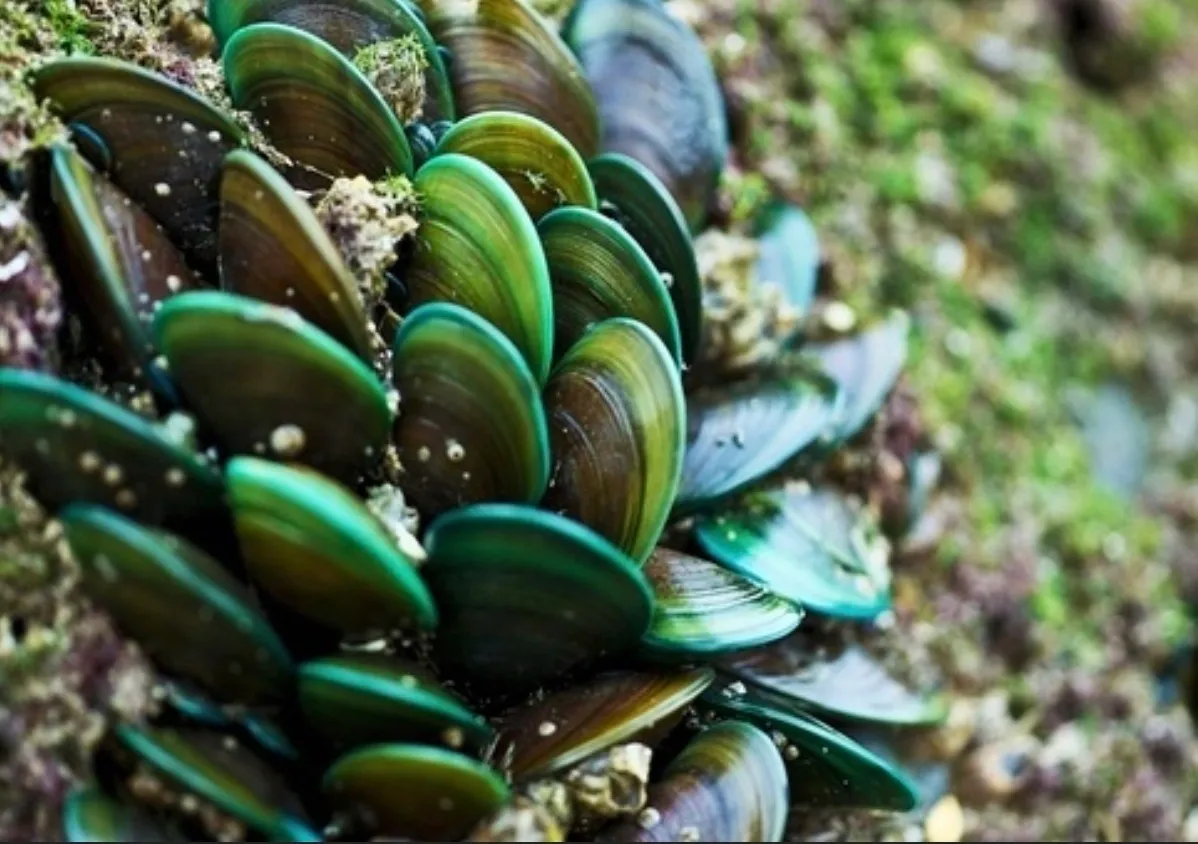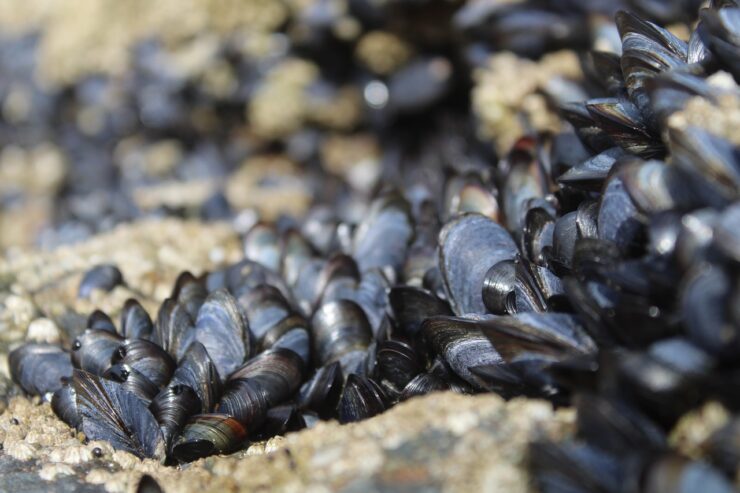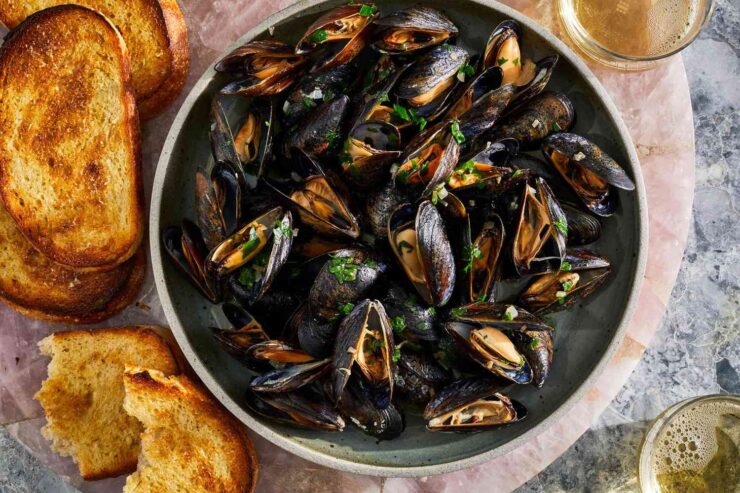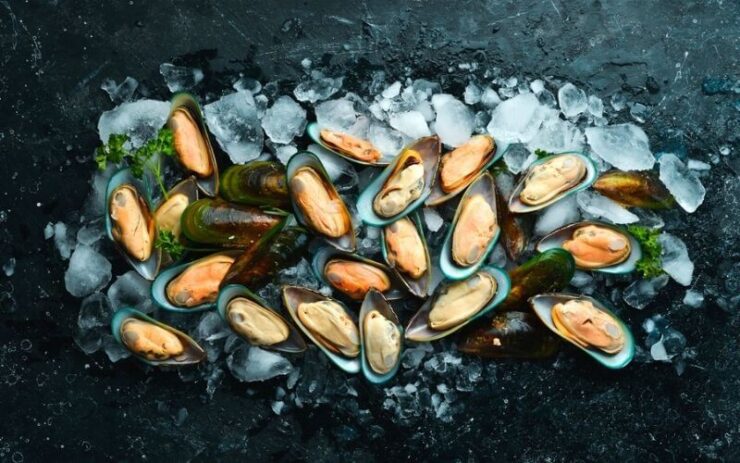When it comes to mussels, most of us are familiar with the classic blue-black shells commonly found in seafood dishes. However, did you know that there are actually two main types of mussels: green mussels and black mussels? These mollusks may look similar at first glance, but their differences go beyond just their outer appearance.
In this article, we’ll delve into the intriguing world of mussels, exploring the surprising disparities between green mussels and black mussels. From their taste profiles to their nutritional benefits, you’ll discover why these bivalves are more diverse than meets the eye. Prepare to be amazed by the unique qualities of these marvelous mollusks!
Appearance and Habitat

Green mussels (Perna canaliculus), also known as New Zealand mussels, are characterized by their striking emerald-green shells. These shells have an elongated shape and a smooth texture, making them easily distinguishable. When the shell is opened, the inside reveals a pearly white color, providing a beautiful contrast to the vibrant exterior. The meat of green mussels is tender and plump, exhibiting a pale orange color that adds to their visual appeal.

On the other hand, black mussels (Mytilus edulis), commonly referred to as blue mussels, showcase a dark blue or black shell, giving them their distinctive name. The shells of black mussels are generally smaller and more rounded compared to their green counterparts. While the meat inside black mussels shares the same plump and succulent characteristics, it possesses a slightly darker hue, creating a visually distinct feature when compared to green mussels.
Both are bivalve mollusks found in marine habitats. Green ones are native to the shores of New Zealand and are commonly cultivated there. They thrive in cool, nutrient-rich waters, attaching themselves to rocks, ropes, or other surfaces using strong byssal threads.
Black mussels have a broader distribution, inhabiting coastal regions in various parts of the world, including North America, Europe, and Asia. They prefer intertidal areas and can form extensive beds on rocky shores or attach themselves to pilings, docks, and other submerged structures.
Flavor and Texture
Both green mussels and black mussels have their unique characteristics. Black ones offer a rich, briny taste with a slightly sweet undertone. Their meat is plump, tender, and succulent.
Green mussels, on the other hand, have a milder, more delicate flavor that some describe as slightly nutty or sweet. Their meat is also tender but often firmer than black mussels.
The differing tastes and textures make them suitable for a range of culinary preparations, allowing chefs to create diverse dishes.
Nutritional Profile
Green mussels are highly nutritious and are considered a rich source of protein, vitamins, and minerals. They are particularly high in omega-3 fatty acids, which are essential for heart health and brain function. Green mussels also contain significant amounts of iron, vitamin B12, and selenium.
Like green mussels, black mussels are packed with nutrients. They are an excellent source of protein and also provide essential vitamins and minerals, including iron, vitamin B12, and zinc. Black mussels are low in fat and calories, making them a healthy choice for those watching their weight.
Culinary Uses

Green mussels are versatile and can be prepared in various ways. They can be baked, grilled, fried, or steamed. They are often incorporated into pasta dishes, seafood soups, and curries. The delicate flavor of green mussels allows them to pair well with a variety of herbs, spices, and sauces.
Black mussels are prized for their culinary versatility as well. They are commonly steamed with white wine, garlic, and herbs, creating a classic dish like moules marinières. Black mussels also work well in pasta dishes, paellas, and chowders.
Availability and Sustainability
Green mussels are primarily cultivated and harvested in New Zealand, where they are considered a sustainable seafood choice. The farming methods used for green mussels help reduce pressure on wild populations and ensure a steady supply throughout the year. They are readily available in both fresh and frozen forms in many markets.
Black ones are widely available in various parts of the world, including Europe, North America, and Asia. They are often harvested from wild populations, making their availability dependent on natural factors and fishing regulations. To promote sustainability, it is important to choose mussels from reputable sources and support responsible fishing practices.
Environmental Impact
One of the key differences between green mussels and black mussels lies in their environmental impact and potential for invasive behavior. Black mussels are considered a native species in the regions where they naturally occur, and they play an essential ecological role in their ecosystems.
However, green mussels, originally from Southeast Asia, have become invasive in several parts of the world, including the United States and Australia. Their rapid growth and ability to outcompete native species pose significant ecological challenges and can disrupt marine ecosystems.
Culinary Considerations
Green mussels are known for their quicker cooking time compared to black mussels. They can become tough if overcooked, so it is essential to monitor the cooking process closely. Green mussels require minimal preparation and can be enjoyed with simple seasonings to let their natural flavor shine.
Black mussels are slightly larger than green mussels and may require a few additional minutes of cooking time. They have a slightly stronger flavor, which makes them well-suited for robust and flavorful preparations. Black mussels should be thoroughly cleaned and checked for freshness before cooking.
Price Point
The price of green mussels can vary depending on the region and market demand. However, they are generally considered more affordable compared to other premium seafood options. Their availability in frozen form makes them a cost-effective choice for those seeking a budget-friendly seafood alternative.
Black mussels are often priced competitively and are considered a reasonably priced seafood option. The cost may fluctuate based on factors such as location, seasonality, and availability. When in season, black mussels can be found at affordable prices, making them accessible to a wide range of consumers.
Conclusion
While green mussels and black mussels share many similarities, including their nutritional benefits and culinary versatility, their subtle differences make them distinct in their own right. Green mussels showcase a milder flavor and a vibrant green shell, while black mussels offer a bolder taste and a dark blue or black shell. Understanding these nuances allows seafood enthusiasts to explore and appreciate the unique qualities each variety brings to the table. Whether you prefer the delicate elegance of green mussels or the robustness of black mussels, both options are sure to delight your taste buds and provide a delightful seafood experience.

